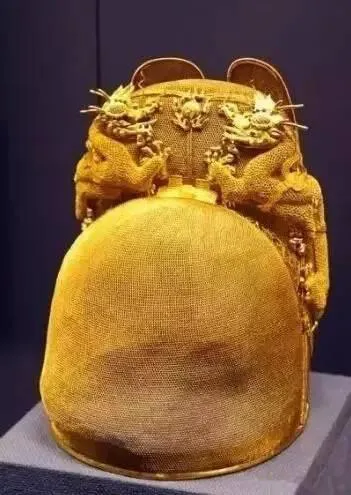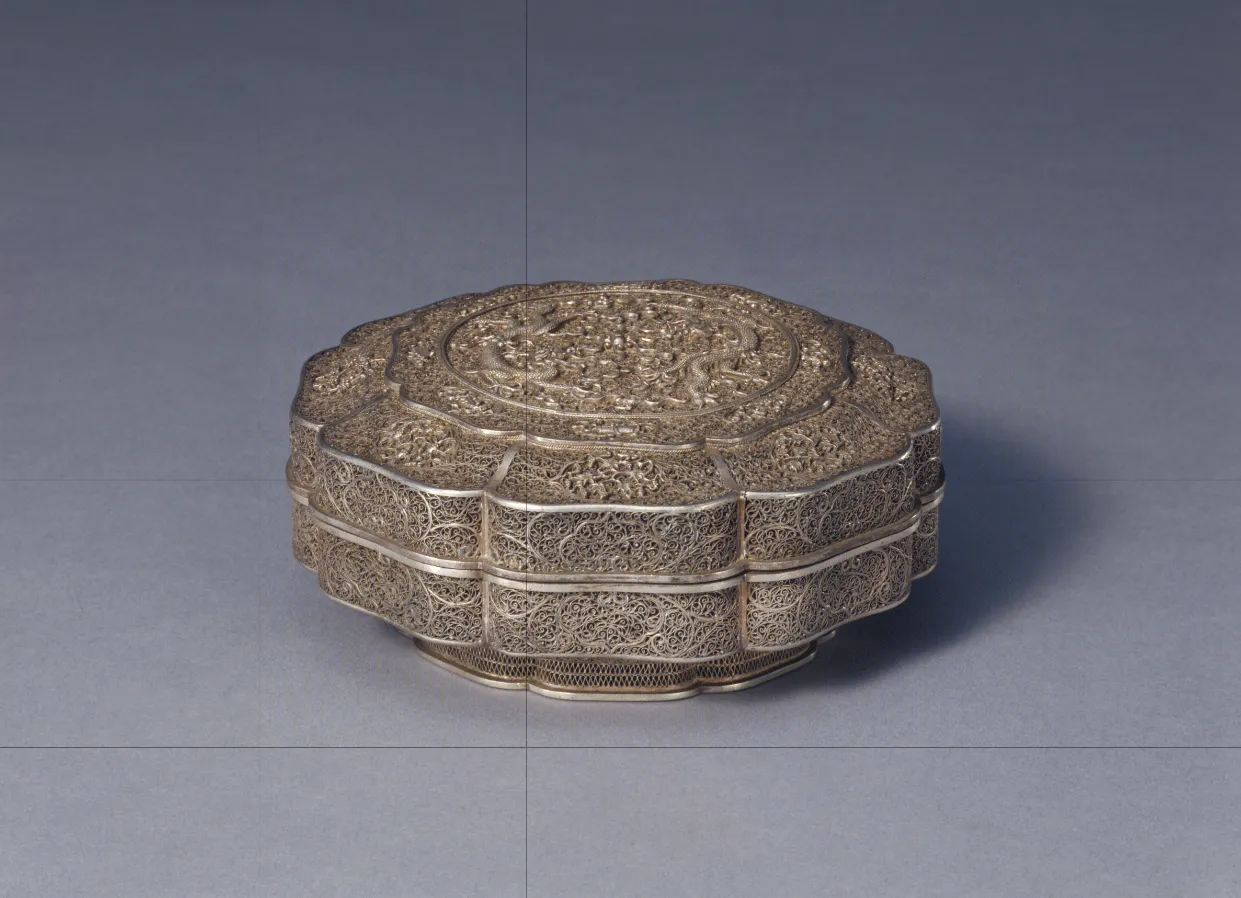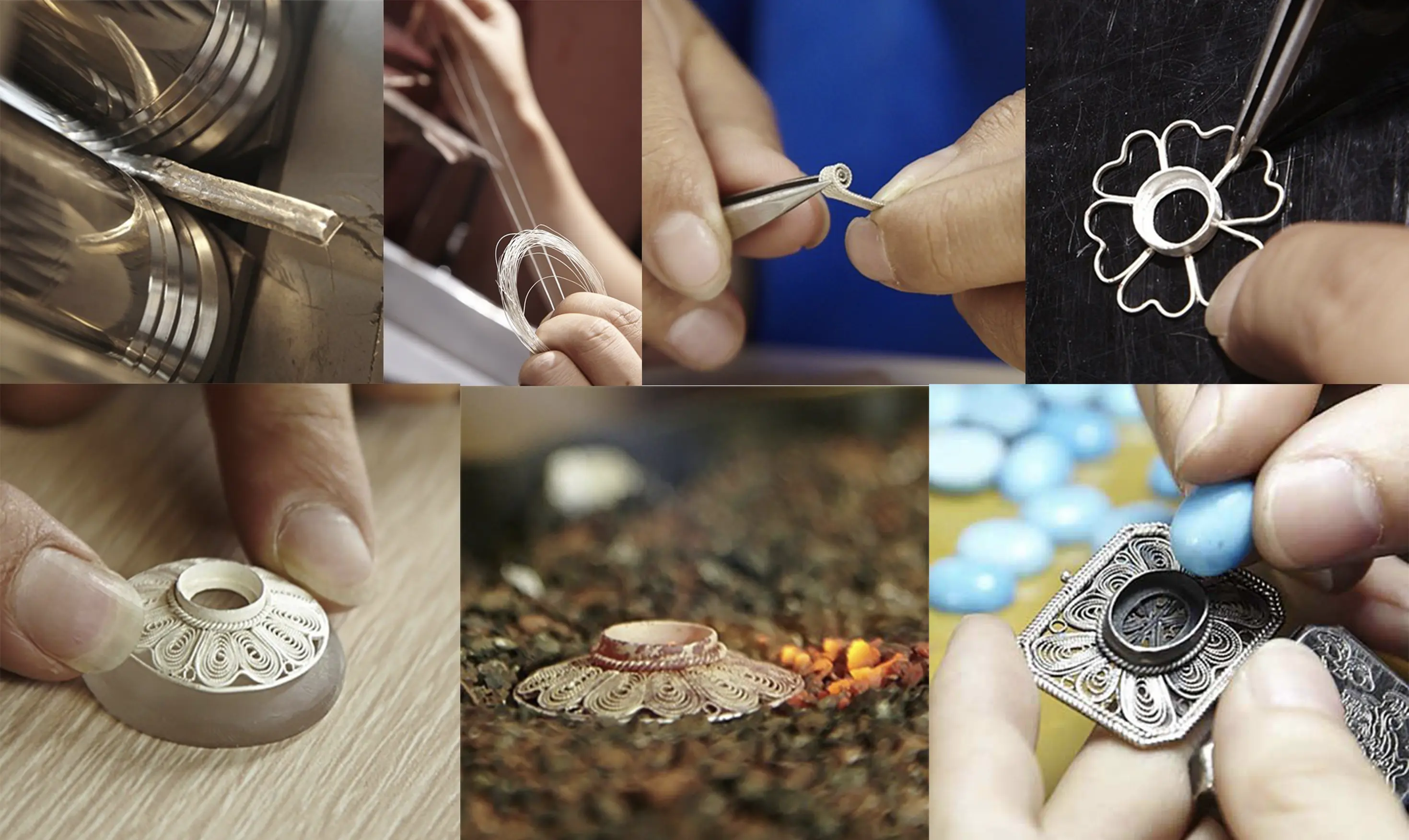A Traditional Art on Threads
Huasi (花丝), often loosely translated as filigree, is one of the most refined and historically enduring techniques in Chinese metal-thread jewelry craftsmanship. With roots tracing back over two thousand years to the Warring States and Han periods, it evolved into a sophisticated decorative language used in court jewelry during the Ming and Qing dynasties.
In 2008, Huasi was added to China’s National Intangible Cultural Heritage List. Yet when people today think of “luxury jewelry,” the dominant image often remains that of Western diamond settings. The intricate, labor-intensive traditions of Huasi—blending metalwork with sculptural grace—are less widely recognized.
What Does “Huasi” Mean?
In Chinese, the word “Huasi” (花丝) combines two characters:
Together, they describe a technique where intricate forms are built from silver or gold wires, creating visual lightness through structural precision.
One of the most extraordinary surviving examples is the crown of the Wanli Emperor (1573–1620), now preserved in the Ming Tombs Museum. The crown was constructed entirely from hand-twisted silver filaments. Despite its complex design—featuring twin dragons chasing a pearl—it weighs just 826 grams and shows no visible solder joints. It stands as a pinnacle of Huasi technique.
Eight Steps in Traditional Huasi Craftsmanship
A traditional Huasi piece typically involves eight major steps, each requiring both dexterity and deep material sensitivity:
- Melting and Drawing: Gold or silver ingots are repeatedly drawn through progressively smaller dies until hair-thin wires are formed.
- Pattern Shaping: Using tweezers and specialized tools, each thread is curled, looped, and arranged into detailed motifs.
- Soldering: Micro-precision soldering is performed to fuse threads. One second of overheating can destroy the piece.
- Filling: Structured zones are filled with patterned wire arrays.
- Assembling: Multi-layered structures are built to create dimensional depth.
- Trimming: Surfaces are polished and cleaned to remove imperfections.
- Inlaying: Gemstones, enamel, or pearls are added as accents.
- Finishing: The piece is reviewed for strength, comfort, and visual balance.
No industrial process can substitute these steps. Each gesture is the product of time, repetition, and accumulated mastery.
How We Work with Huasi
At Light Stone, we collaborate with Huasi artisans in Beijing workshops that continue to preserve this tradition through hand-based training and collective studio knowledge.
Rather than replicating historical pieces, we reinterpret the structural logic of Huasi: its sense of lightness, its emphasis on line, and its control of space.
To us, the beauty of Huasi lies not in decoration, but in the space between each thread.
Explore the collection:
Visit the Huasi Collection




